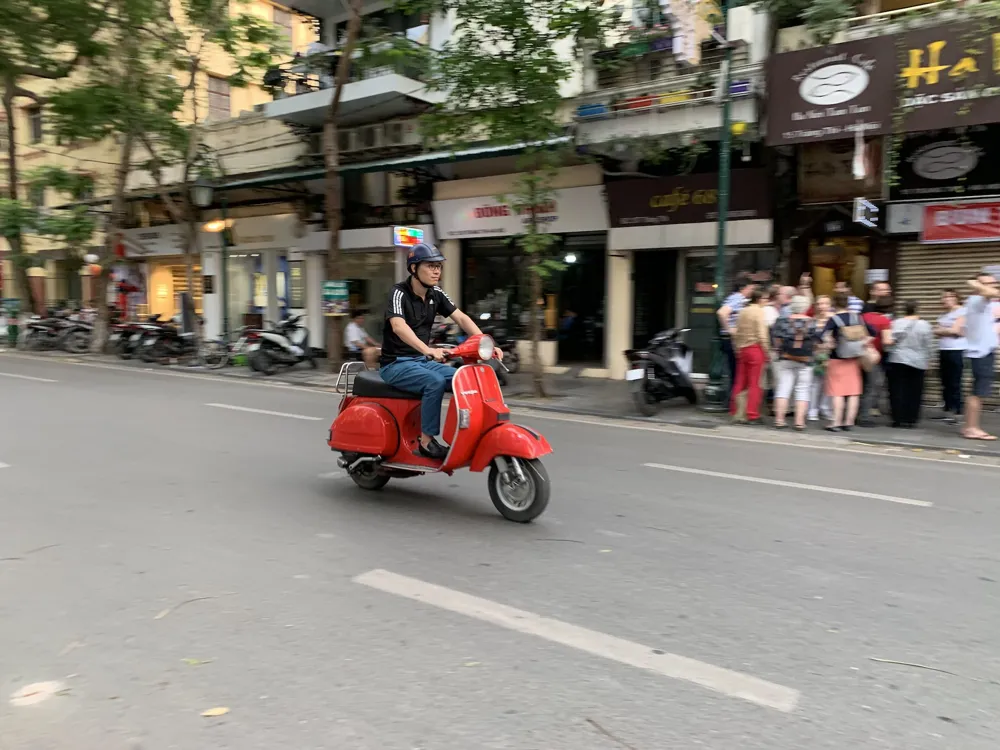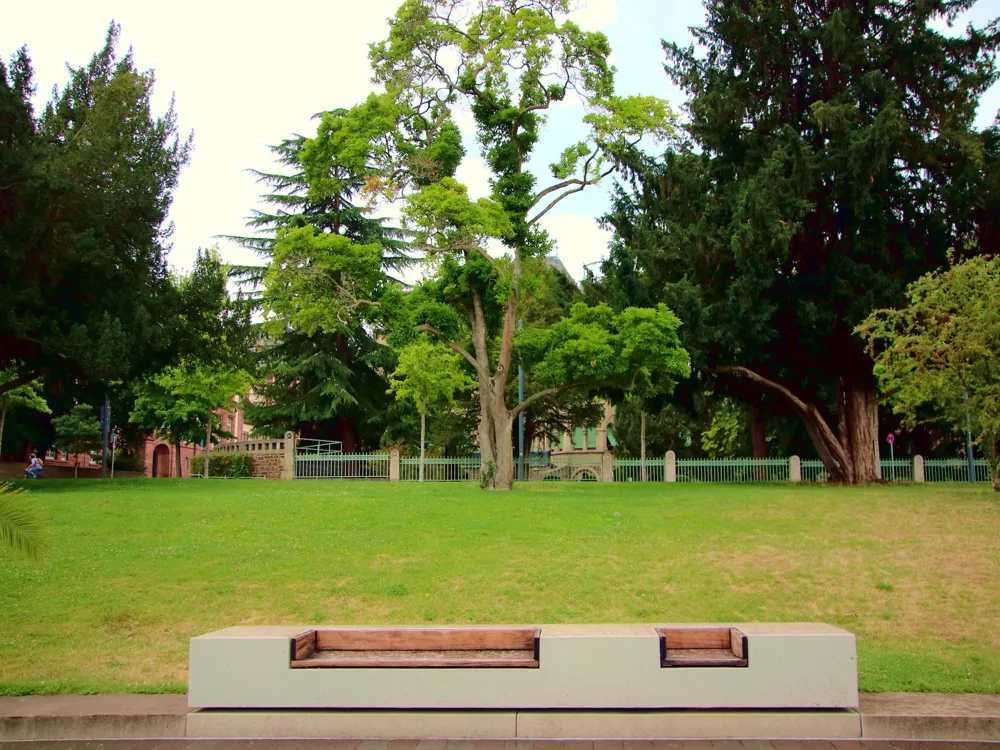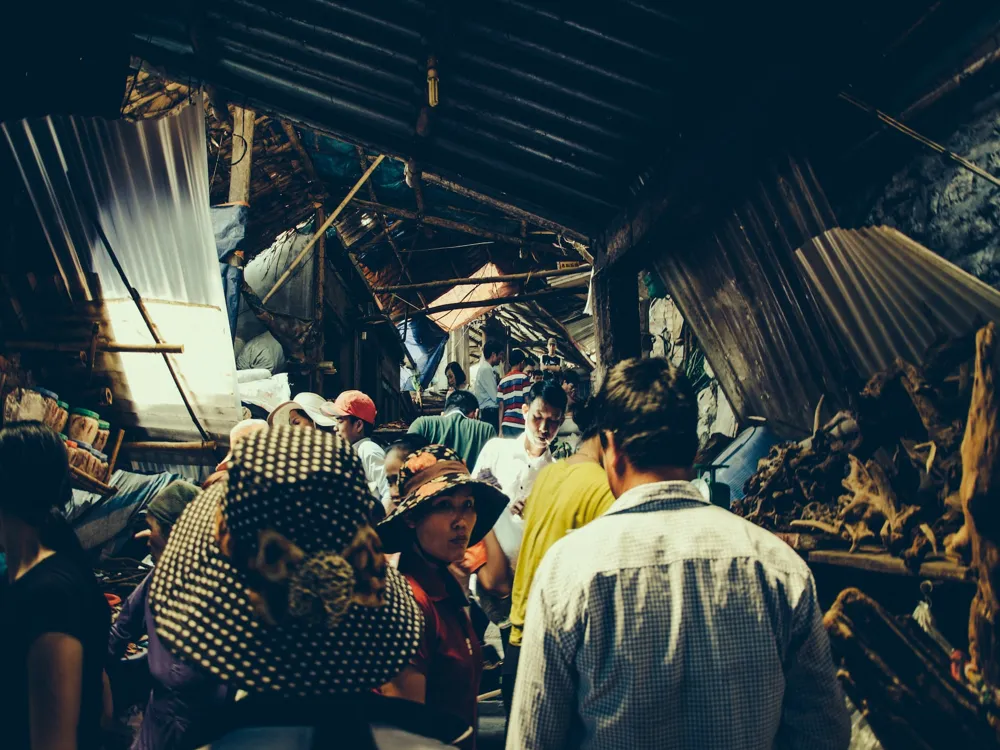Quan Thanh Temple, a significant historical and cultural landmark in Hanoi, stands as a testament to Vietnam's rich cultural heritage. Located near West Lake, this Taoist temple was founded during the Ly Dynasty, around the 11th century, to honor Saint Huyen Thien Tran Vu, a mythological figure known for his power to control demons and spirits. The temple has undergone several renovations over centuries, each adding layers of history and architectural detail, making it a fascinating site for both historians and tourists. The primary hall, with its intricate wood carvings and ancient artifacts, houses a massive black bronze statue of Tran Vu, a masterpiece of Vietnamese craftsmanship from the 17th century. The statue, weighing around four tons, is an embodiment of the temple's historical and spiritual significance. The temple complex, with its serene ambiance and traditional Vietnamese architectural elements, offers a tranquil retreat from the bustling city streets of Hanoi. Visitors to Quan Thanh Temple are greeted by an impressive three-entrance gate, known as Tam Quan Gate. The gate's architecture, featuring a traditional Vietnamese design with ornate details, sets the tone for the temple's historical significance. The courtyard, surrounded by lush greenery and ancient banyan trees, leads to the main temple hall. This area, used for worship and spiritual ceremonies, is a blend of architectural styles reflecting different periods in Vietnamese history. The temple's architecture is a harmonious blend of Taoist symbolism and Vietnamese design elements. The roof, adorned with intricately carved dragons, is an excellent example of Vietnamese craftsmanship. The use of wood and stone throughout the temple adds to its rustic charm, while the altars and ceremonial objects display the religious and cultural practices of the Vietnamese people. Throughout its history, Quan Thanh Temple has played a vital role in the spiritual life of Hanoi's residents. It is not only a place of worship but also a symbol of the city's resilience and enduring culture. The temple's location near West Lake adds to its scenic beauty, making it a popular spot for photographers and nature enthusiasts. The architecture of Quan Thanh Temple is a splendid representation of traditional Vietnamese religious structures, blended with influences from various dynasties that have left their mark over centuries. Its design is a harmonious amalgamation of the spiritual and the artistic, making it a visually stunning and culturally significant site. One of the most striking features of Quan Thanh Temple is its main hall, where the colossal statue of Tran Vu resides. This statue not only holds religious significance but is also a remarkable example of Vietnamese bronze casting skill. The hall itself, supported by wooden columns, showcases intricate carvings depicting mythical creatures, stories from Vietnamese folklore, and Taoist symbols, reflecting the deep spiritual roots of the temple. The temple's layout follows the traditional 'three-part' structure common in Vietnamese religious architecture. This includes the front hall, the main worship space, and the rear hall. Each section serves a distinct purpose, from welcoming visitors to conducting religious ceremonies. The seamless integration of indoor and outdoor spaces in the temple's design allows for a natural flow of energy and light, creating an ambiance of peace and contemplation. Detailing in the temple's architecture, like the roof's curvature adorned with dragon motifs and the carefully crafted wooden beams, showcases the precision and skill of Vietnamese artisans. These elements are not just decorative but are imbued with cultural and religious symbolism, reflecting the Taoist influence on Vietnamese culture. Moreover, the temple grounds feature a lush garden and a serene pond, adding to the overall tranquility of the place. This integration of nature into the temple's architecture is a reflection of the Taoist philosophy of harmony between humans and the natural world. As a place of worship, visitors should dress modestly and respectfully when visiting Quan Thanh Temple. Avoid loud conversations and maintain a peaceful demeanor to respect the sanctity of the temple. While photography is generally allowed, it's important to be mindful of worshippers and avoid using flash inside the temple. Always check for any specific photography restrictions upon arrival. The best time to visit Quan Thanh Temple is during the early morning or late afternoon when it's less crowded, allowing for a more serene experience. Additionally, visiting during traditional festivals can be fascinating, though more crowded.Overview of Quan Thanh Temple in Hanoi
Architecture of Quan Thanh Temple
Tips When Visiting Quan Thanh Temple
Dress Code and Conduct
Photography Guidelines
Best Time to Visit
Quan Thanh Temple
Hanoi
₹ 15,260 onwards
View hanoi Packages
Weather :
Tags : Temple
Timings : 5:00 AM - 7:00 PM
Entry Fee : VND 10,000
Planning a Trip? Ask Your Question
Hanoi Travel Packages
View All Packages For Hanoi
Top Hotel Collections for Hanoi

Private Pool

Luxury Hotels

5-Star Hotels

Pet Friendly
Top Hotels Near Hanoi
Other Top Ranking Places In Hanoi
View All Places To Visit In hanoi
View hanoi Packages
Weather :
Tags : Temple
Timings : 5:00 AM - 7:00 PM
Entry Fee : VND 10,000
Planning a Trip? Ask Your Question
Hanoi Travel Packages
View All Packages For Hanoi
Top Hotel Collections for Hanoi

Private Pool

Luxury Hotels

5-Star Hotels

Pet Friendly






















